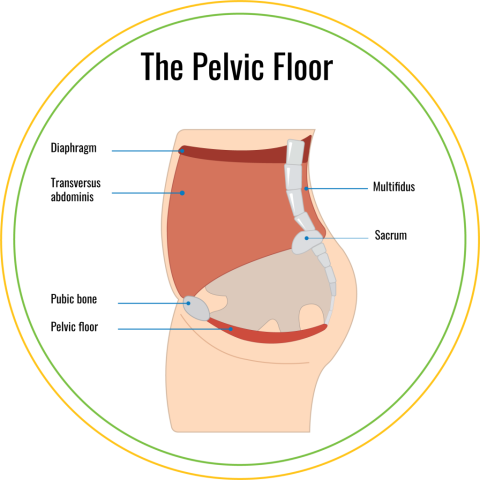Pelvic Floor Exercises: How to do them
What is the pelvic floor?

The pelvic floor is the area where urine and feces come out of the body.
- For women, it’s where babies come out from.
- It is made up of the muscles that stop shiishii, miishii and gas.
- It goes from the pubic bone in the front to the tailbone in the back, like a hammock.
- When you are sitting on a stool, it is the area that is touching the stool.
- It can become weak and/or too tight after giving birth, with ageing or many other reasons.
How do I know if my pelvic floor muscles are weak or strong?
-
If you recently gave birth, they are probably weaker.
-
If you leak urine when you cough, laugh, jump or other activities you might have a weak pelvic floor which can cause urinary incontinence.

Urinary incontinence is any involuntary loss of urine.
Is there a way to test my pelvic floor muscles myself?
Yes. For women, you can try the following steps.
It will require you to put your fingers in your vagina, so find a quiet and safe place
You can do the following in different positions, lying in your back with your knees bent, standing up in the shower, or standing with one foot on the toilet/chair. Try and see what feels most comfortable for you.
-
Wash your hands
-
Insert 1-2 fingers in your vagina
-
Try to contract your pelvic floor muscles (as if you wanted to stop shiishii)
-
You should feel your fingers getting squeezed, being pulled in and up. If you feel that they are being pushed out, try it again, this time while you breathe out and imagine that you are lifting the pelvic floor muscles up.
-
How long can you hold the strong contraction for? Ideally, it should be around 10 seconds
If you don’t feel any contraction, that you are pushing your fingers out or you have any questions, ask to be seen by a pelvic health physiotherapist. We are here to help.
I feel I can do a proper contraction of my pelvic floor. What are the exercises I can do?
With all of these, it can take some time to build up the strength and endurance. Start with what you can and gradually increase the time and repetition as you get stronger.
Start with laying on your back, knees bent
Exercise 1: Maximal contraction
-
Inhale, inflating your belly.
-
As you exhale, pull your belly button in gently and contract your pelvic floor muscles (like you’re trying to hold in siishii/gas).
-
Hold the contraction for 5 seconds as you exhale.
-
Take a 10 second break.
-
Repeat 5 X if possible.
When it gets easier, you can gradually increase to 10 times with a 10 second hold. You can also try this while sitting, and then standing.
Exercise 2: Perineal lock
- Do a pelvic floor contraction as above
- Cough while you keep the contraction. Hold it for 2 seconds after the cough.
- Repeat 3 times
Exericse 3: Fast contractions
- Squeeze and relax your pelvic floor muscles 10 times as fast as you can.
- Take a 30 second break and repeat 3 times

Is there anything else I can do?
Yes. Make it a habit of pulling your belly button in and contracting your pelvic floor before you :
-
cough or sneeze
-
lift your baby
-
lift heavier objets
-
laugh
-
Or any other situations when you usually have leaks
It can help to prevent leaks.
When I put my fingers in my vagina or when I do the contraction it is painful
Stop doing the exercises or the testing.
There might be some muscle tension in your pelvic floor muscles. Ask to be referred to a pelvic health physiotherapist.
Leakage issues or pain are very common but not ‘normal’. If you have any questions or need some advice, ask your doctor or nurse to be seen by a physiotherapist who has advanced training in pelvic health problems. There might be one in your community.
Or you can contact the pelvic health team directly.


